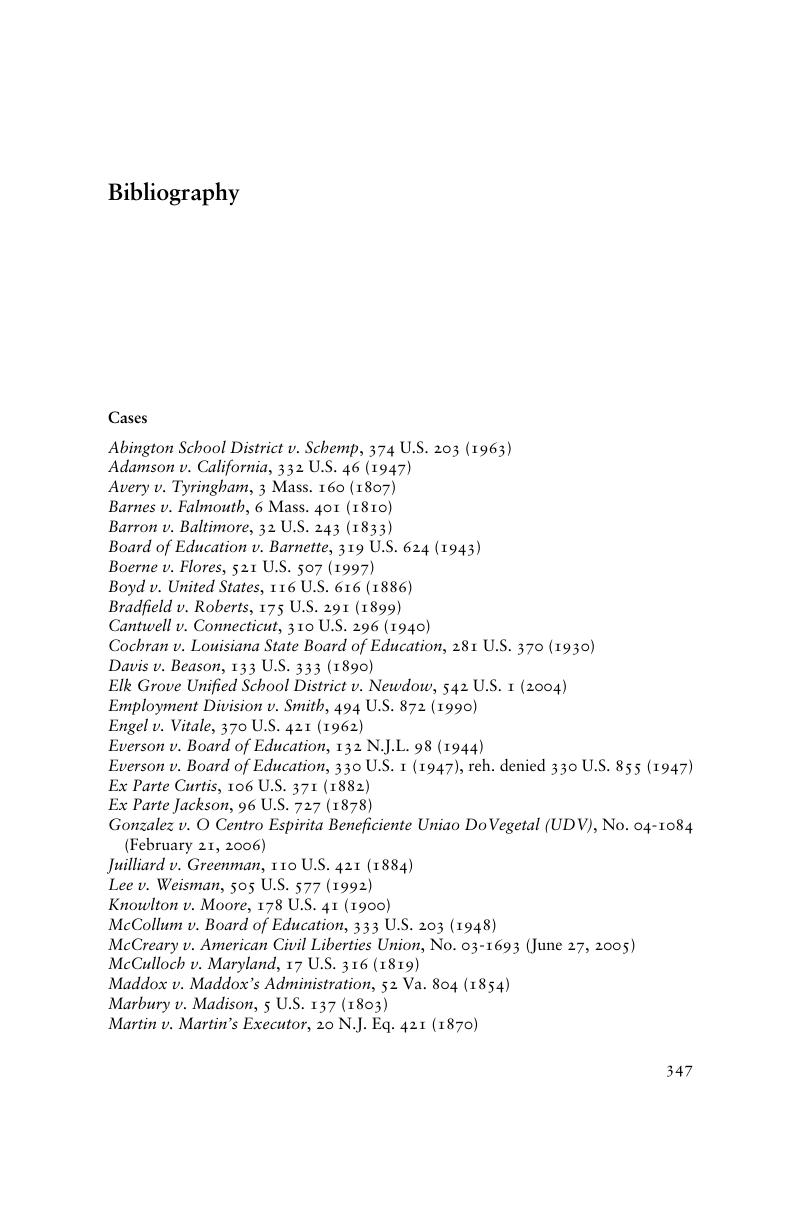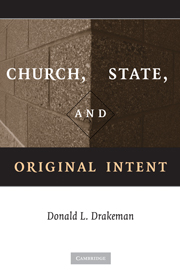Book contents
- Frontmatter
- Contents
- Preface
- 1 Introduction
- 2 Reynolds: The Historical Construction of Constitutional Reality
- 3 Everson: A Case of Premeditated Law Office History
- 4 The Battle for the Historical High Ground
- 5 Original Meanings: Where Is the Historical High Ground?
- 6 Incorporating Originalism
- 7 Conclusion
- Bibliography
- Index
- References
Bibliography
Published online by Cambridge University Press: 05 June 2012
- Frontmatter
- Contents
- Preface
- 1 Introduction
- 2 Reynolds: The Historical Construction of Constitutional Reality
- 3 Everson: A Case of Premeditated Law Office History
- 4 The Battle for the Historical High Ground
- 5 Original Meanings: Where Is the Historical High Ground?
- 6 Incorporating Originalism
- 7 Conclusion
- Bibliography
- Index
- References
Summary

- Type
- Chapter
- Information
- Church, State, and Original Intent , pp. 347 - 368Publisher: Cambridge University PressPrint publication year: 2009



